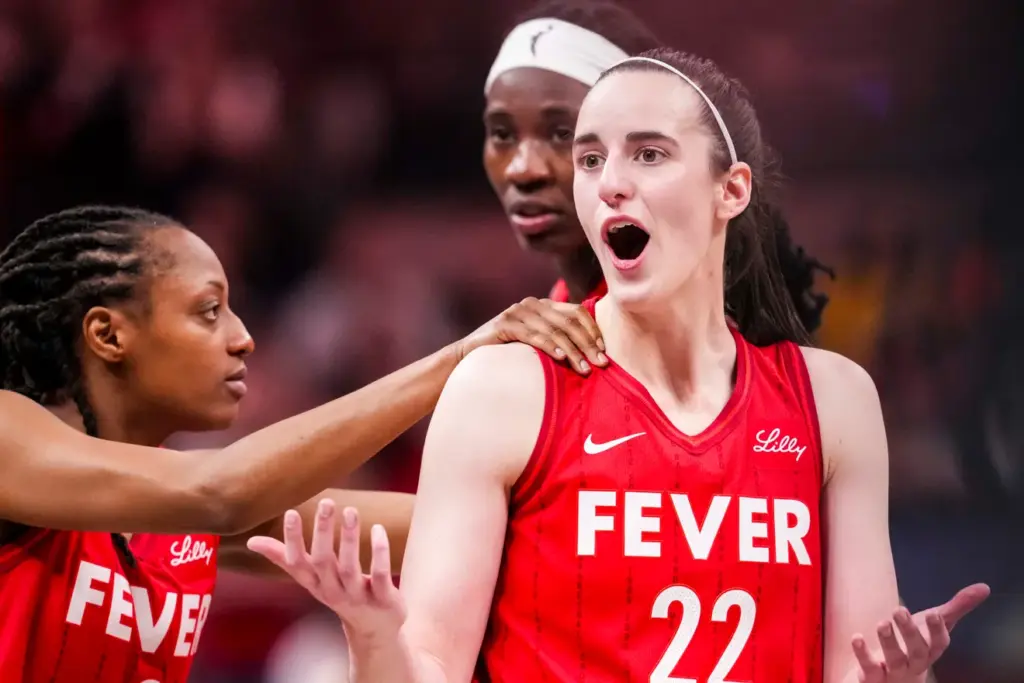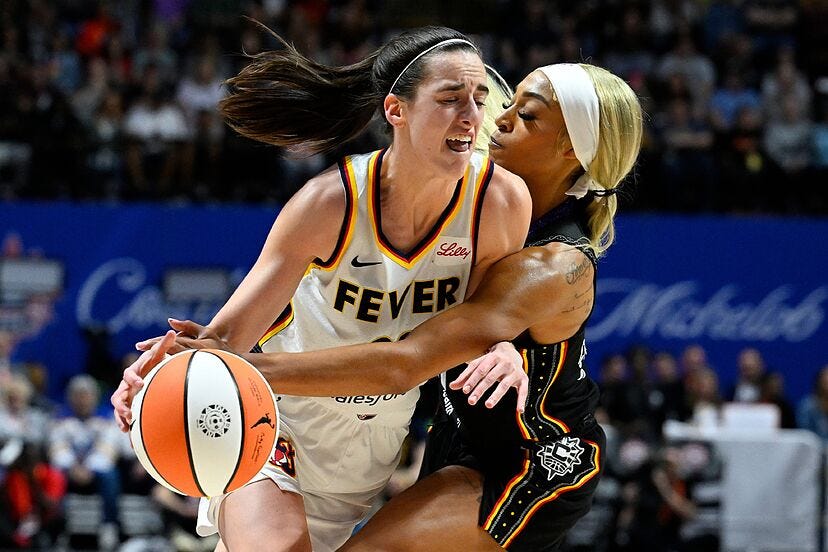🔍 The Rift Behind the Headlines
Caitlin Clark, the electrifying rookie guard for the Indiana Fever, has taken the WNBA by storm—racking up fan votes, topping All-Star leaderboards, and transforming the league’s profile. However, despite her sky-high popularity, she’s faced tepid standing from fellow WNBA players in league voting and locker room dynamics—and it’s no accident.
📊 All-Star Voting Snub: A Telling Sign
In the 2025 WNBA All-Star selection, Clark earned over 1.29 million fan votes—the highest ever. Yet her peers ranked her only ninth among guards, a puzzling result considering her rookie status and fan momentum.
This isn’t a one-off. Veteran players consistently place Clark below peers who don’t make the All-Star roster—despite Clark’s on-court impact. Former broadcaster Dick Vitale labeled this “pure jealousy”.

🏆 Is It Jealousy or Respect?
There are competing interpretations:
- Jealousy argument: Critics say Clark’s rapid rise—media attention, record-breaking stats, and a massive endorsement deal with Nike—is triggering envy among established players threatened by the spotlight.
- Performance-based critique: Some insiders note that Clark has played just nine games this season due to injuries. On metrics like shooting efficiency and turnovers, she’s behind other guards—suggesting players simply weigh performance, not persona.
🎙️ Gilbert Arenas: A Defending Voice
Ex-NBA star Gilbert Arenas recently defended Clark on his podcast, calling the peer snub “disrespect” and pointing to the WNBA’s reliance on her to drive ratings and attendance.
He compared Clark’s role to Michael Jordan’s in the NBA—suggesting critics in the league are forgetting how valuable she is to their exposure and salaries.
🧱 Deeper Tensions: Change and Culture
Beyond envy or stats, these dynamics reflect broader tensions in the WNBA:
- Stardom vs. Team Unity
Veteran players may feel Clark’s hype distracts or overshadows collective goals—especially when team depth matters more than individual fame. - Cultural & Racial Context
Clark, a white Midwestern star, entered a league historically built by Black women. Some argue her meteoric rise highlights deeper racial and cultural discomfort. - Pressure on Performance
Veterans want to see Clark walk the talk—stay on the court, show consistency, and prove she’s more than hype.
📈 The Stakes: League Growth or Division?
Clark’s arrival has dramatically pulled attention:
- Record WNBA viewership & attendance
- A $2 billion broadcast deal on the horizon
- A cultural phenomenon dubbed the “Caitlin Clark effect”
But if internal feuds surface, the league risks a public image split—one between the new face of growth and the established baseline of excellence.
🔧 Moving Forward: Healing the Rift
To manage this tension, the WNBA and players should:
- Encourage open dialogue—honest conversations about feelings or biases during training camps and All-Star meetups.
- Promote mentorship—connect veteran leaders with Clark for mutual learning.
- Rebalance recognition: support Clark’s star power while celebrating veteran achievements.
- Amplify team unity messages—highlight players like Angel Reese and Sabrina Ionescu whose performances earned player votes.

🤔 Distinct Athlete Take
At Distinct Athlete, we see more at play:
- Stars and standards evolve, but so do spaces that players occupy in locker rooms.
- Clark’s rise challenges norms—and tensions are natural during explosive change.
- How the league responds could define the WNBA’s future identity—not just in viewership, but in equity, respect, and athlete culture.
🔗 Related Reads on Distinct Athlete
➡️ Caitlin Clark’s Wealth, Endorsements & Market Value
➡️ Angel Reese vs Caitlin: A Rivalry Redefining Women’s Basketball
➡️ Why Athletes Like Clark & LeBron Drive League Profits
💬 Join the Conversation
Is the snubbing of Caitlin Clark by WNBA players fair or shortsighted? How should the league balance rising stars with veteran respect?
Share your thoughts @DistinctAthlete on Instagram, X, and Facebook with #ClarkControversy

